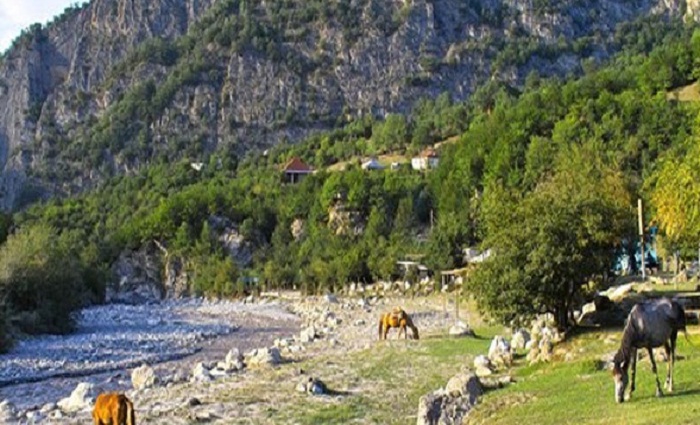The region of Fizuli is the administrative region of the Republic of Azerbaijan. It neighbors with the Islamic Republic of Iran in the south-eastern part. Its area is 1390 km2; the population is 118,900 (01.01.2011). The central town is the city of Fizuli.
The region covers the following districts and villages: the city of Fizuli; the city of Horadiz, 16 newly constructed settlements (Gayidish-1, Gayidish-2, Gayidish-3, Gayidish-4, Gayidish-5, Gayidish-6, Gayidish-7, Gayidish-8, Gayidish-9, Gayidish-10, Gayidish-11, Zobuchug-1; Zobuchug-2; Zobuchug-3; Zobuchug-4; Zobuchug-5) and villages of Ahmadbayli; Bala Bahmanli; Araz-Zerghar; Araz Dilagarda; Birinji Mahmudlu; Ikinji Mahmudlu; Ahmadalylar; Gazakhlar; Mirzenaghyly; Ashaghy Kurdmahmudlu; Yukhary Kurdmahmudlu; Alkhanly; Boyuk Bahmanli; Kerimbayli; Arayatyly; Baby; Mollamaharramli; Horadiz; Ashaghy Seyidahmadli; Shukurbayli; Yukhary Seyidahmadli; Gorgan; Shekerchik; Shykhly; Ghejegozlu; Uchunchu Mahmudlu; Ashaghy Veysalli; Yukhary Veysalli; Sarajyg; Yukhary Refedinli; Gorazilli; Garadagly; Yukhary Guzlek; Khatynbulag; Gachar; Divanalylar; Garakhanbayli; Merdinli; Gochahmadli; Arysh; Mollavali; Dedeli; Ishygly; Gargabazar; Yal Pirahmadli; Yukhary Yaglyvend; Garamammadli, Dilagarda; Gobu Dilagarda; Garvand; Yukhary Abdurrahmanly; Kurdler; Ashaghy Abdurrahmanly; Dordchinar; Seyidmahmudlu; Alasgarli; Huseynbeyli; Pirahmadli; Musabeyli; Mandyly; Ashaghy Guzlek; Ashaghy Refedinli; Uchbulag; Juvarly; Khalafsha; Chimen; Yukhary Aybasanly; Dovletyarly; Ashaghy Yaglyvend; Garakollu; Govshadly; Hajyly; Mirzachamally; Zergar; Ghyzylghyshlag; Agbashly; Murtuzalylar; Hungutlu; Serdeli; Shykhymly; Govshatly.
The following educational and social institutions ran its activities before the occupation: 86 secondary schools; 2 vocational schools; 54 kindergartens; 10 musical schools; 27 clubs; 2 museums; 90 libraries; 13 hospitals; 17 medical treatment points; 48 maternity services centers.
Many historical-archaeological and architectural monuments, including the ancient human settlements and burial mounds (New Stone Age; Bronze Age), turbehs (XIII-XVIII centuries), mosques (XVII-XIX centuries), the caravanserai (1684) and others are left in the region.
Garghabazar caravanserai
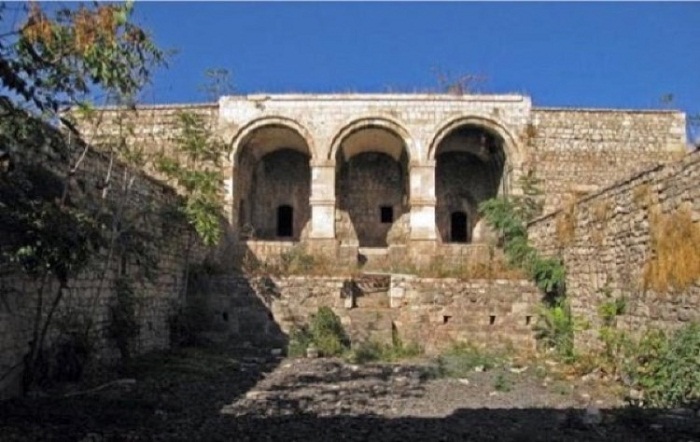
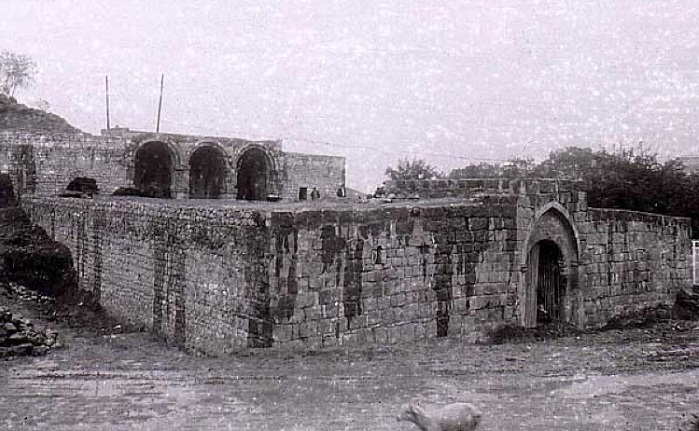
Garghabazar caravanserai was built in 1681 at the hillside, in the centre of Garghabazar village of Fizuli district. Caravanserai building is 23.7 metres wide, 34.7 metres in length. Garghabazar caravanserai is a single storeyed multi-yarded asymmetric caravanserai with arched rooms like corridors. The caravanserai was named Garghabazar after the village it was built in. Sometimes this historical monument is also called Shah Abbas caravanserai. The architect of the monument is unknown.
Concerning its architectural style, Garghabazar caravanserai bears resemblance to the architectural traditions of the Albanian period. There are two large slabs of stone on the right and left sides of entrance, in front of the guard rooms. Apparently the guards used to stand on those stones and watch the loads of the caravans. Caravanserai is considered an immovable historical monument of Azerbaijan.
After the occupation of Garghabazar village, the Armenians transformed this historical and architectural monument into a cowhouse.
Haji Alakbar Mosque
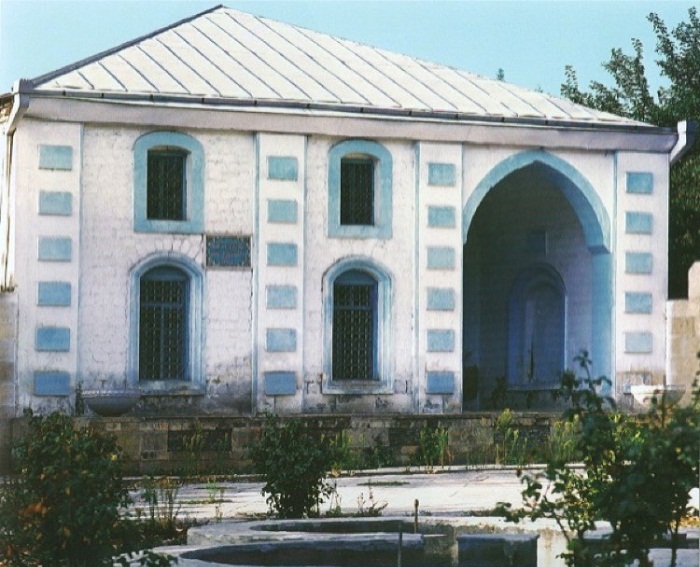

Haji Alakbar Mosque in Fizuli city is one of the first works of Karbalayi Safikhan Garabaghi. A stone inscription bearing the words “This is the Architect Karbalayi Safikhan Garabaghi’s work” was found at the entrance door. Date of construction of the Mosque – the year 1307 Hegira calendar was also noted on inscription. This date equals 1889-1890 AD. This place of worship was named Haji Alakbar Mosque. Haji Alakbar was philanthropist.
He allocated funds and invited masters from Shusha for construction of the mosque. As a token of honour and respect for his charitable deeds the local people buried Haji Alakbar bey opposite the first of the left windows of the mosque constructed by himself.
During the occupation of the FIzuli city by the Armenian Armed Forces in August, 1993, Haji Alakbar Mosque was rendered useless.
Mir Ali tomb

The tower-shape tomb raised on a hill in Ashaghi Veysalli village of Fizuli region is known among the locals under the name of Mir Ali Tomb. The two-storied inner structure of the tomb consists of an underground vault and an overground chamber.
Although there are no inscriptions and ornaments on the tomb, its construction technique and structural-spatial concept prove that this tomb was built during the reign of Elkhanids in late 13th-early 14th century.
Mosque in Garghabazar village
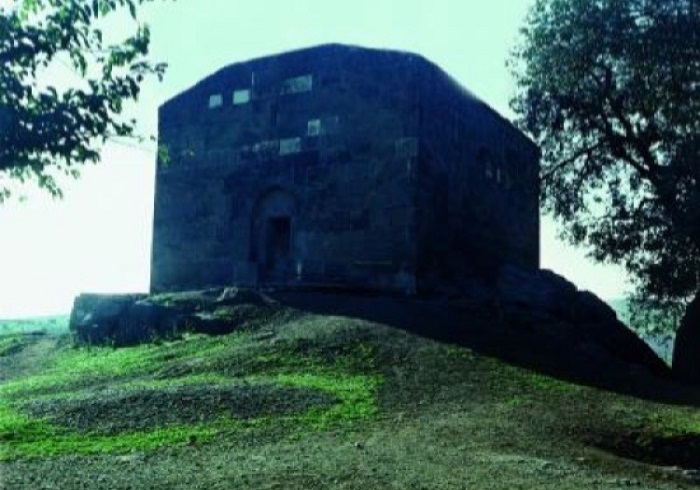
One of the oldest mosques of Karabakh is situated in Garghabazar village of Fizuli region. Popularly known as Shah Abbas Mosque among the people, this mosque was described in scientific literature as Haji Giyaseddin Mosque. Because the door of the mosque bears an inscription as “This mosque was constructed by Haji Giyaseddin, the kind creature of Great Allah, in Hegira 1095”.
This date corresponds to AD 1683-1684. Haji Qiyaseddin Mosque does not have a veranda. It was completely constructed of the local stone and consisted of one hall. The roof is in the arched ceiling form. Wooden materials were used nowhere except the entrance door. The mosque was built on the slab rock hill in the centre of the village.
As a result of the occupation of the Fizuli region in 1993, Haji Giyaseddin Mosque was demolished by Armenian invaders.
Azerbaijani monuments in Armenian captivity P/1- Aghdam Region








